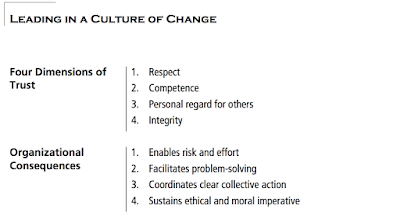Prompt #1
How do you strip down your data and make a connection to it to improve outcomes for students? How do you get dialogue happening around your data.?
There is a lot of research stating that data is important because it shows progress or movement and it informs next steps. It shows trends across the school or cluster and informs resourcing and professional development. This is of course all true, but the real value in the data for our children, are the conversations that come out of it.
I have what I call 'data meetings' each term. They are not so much about interrogating the data which is important, but about knowing each child and using our collective wisdom to address their needs. The bringing together of the data into a physical space is about confronting the facts and seeing for ourselves, as a collectively responsible team, who these children are and what we all know about them.
At the first meeting I discuss the research that I have already shared with the team prior to the meeting. I may use something from "Student Centred Leadership" (Robinson, 2011), or from BES. At this first meeting I use a physical data board with the names of the children and their OTJ level taken from the baseline data (end of year previous OTJ). The percentages or raw numbers are looked at against expectations. I then read out loud the names of each child in the well below and below expectation and allow those names to sink in before beginning discussions.
After that I ask some questions:
- Are there any surprises?
- Is there anyone who you think is in the wrong place?
- Do you know why this child (N) is here?
Next I ask what we know about the children individually.
- Have they performed better in the past?
- Is there anything we should know that will help us to cater better for this child's needs?
- What has the previous teacher told you about these children? In lots of cases someone on the team has taught those children in the past. This year, two of the four teachers had.
Then in a more general sense:
- What have you tried in the past that has had a good impact on learning/engagement/ relationships with children?
- How involved have you been with their families? siblings? parents?
- What have you tried that hasn't worked?
I then compile a list of all of the strategies that the teachers in the room have tried before that they feel made a difference. This is a positive feeling brainstorm as teachers start to unlock and share strategies/ideas that they have used in the past. There are lots of "That's right! I used to do that and the kids loved it! as they remember things that had slipped into the background. When the list is at about thirty shared strategies, I then invite the teachers to choose one strategy that they will take away and try for the next 5 weeks. The teachers commit to this (especially helpful if it contributes to their Teaching as Inquiry).
At the end of the 5 week trial, we have another 'data' meeting. There is no data presented, other than anecdotal feedback about how the trial has gone. At this meeting, I will present some more research supporting the trial. This year I used the ERO document on "Raising student Achievement Through Targeted Actions" (2015). I write up the findings so far, as the teachers discuss what has happened. They then commit to either continuing on with the same strategy with changes, or they select another strategy to try. This process usually re energises the teachers and leads them away from the 'same old')
The final 'data' meeting of the year includes the updated data board. This (hopefully!) is another feel good meeting. "Look at the effects of your specific, targeted actions!" We revert to the percentages to see how much difference has been made. Of course we don't have a control group so we don't know if doing nothing would made an impact, but we choose, based on the great improvements, to believe that we have made a difference.









